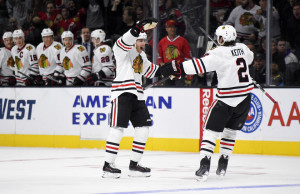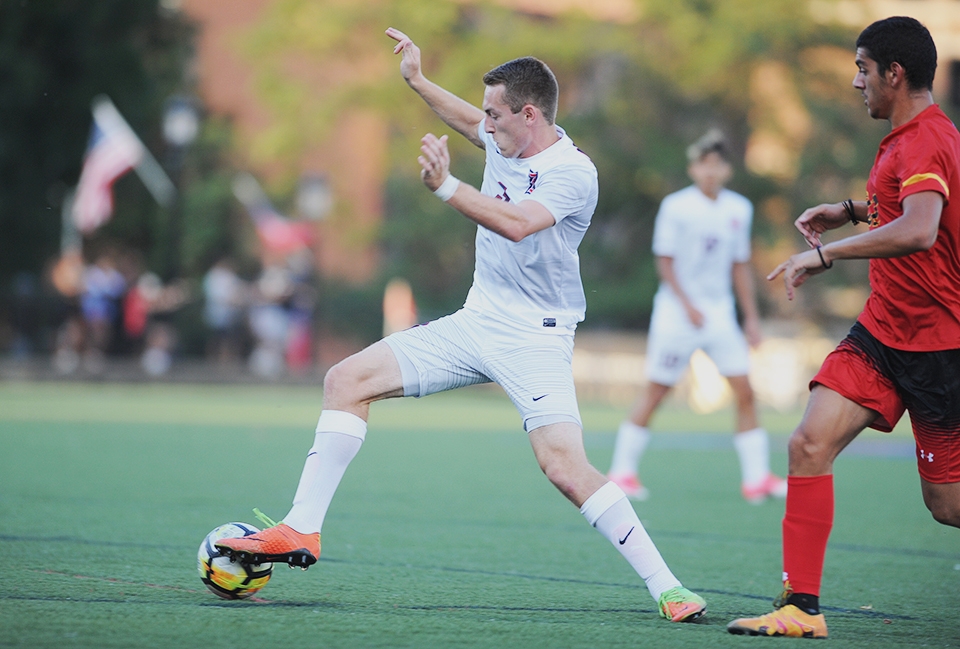
By Joseph Sykes | Sports Editor
The Chicago Blackhawks’ Nov. 28 overtime loss to the Los Angeles Kings is one game ‘Hawks forward Patrick Kane will never forget.
Just over 12 minutes into the Western Conference matchup, the 27-year-old Kane corralled a puck off the stick of Kings captain Dustin Brown and sniped the puck top shelf over goaltender Jonathan Quick. This goal wasn’t special in the sense that it gave Chicago an early lead, or the fact that it was scored in such a manner that would make an ordinary man speechless.
The first period tally was in fact Kane’s 19th-straight point, which broke the record for the longest point streak by an American-born player. Three night’s later, Kane would extend his record to 20 after going five-hole on Minnesota’s Devan Dubnyk, further cementing Kane’s legacy as one of the game’s greats.
With Saturday night’s score, Kane passed former ‘Hawks center Eddie Olczyk and current Penguins winger Phil Kessel for the title. The accomplishment speaks for Kane’s superior ability, but it also highlights the fact that American-born players are dominating today’s game despite only making up 15 percent of the league.
The number of Americans competing in hockey’s top tier has obviously grown since the NHL expanded its six-team system in the 1960s. It wasn’t till the mid-2000s, though, that the United States could start keeping up with the Canadian, Finnish and Swedish hockey factories that were pumping out superstar-caliber skaters.
Sure there was Chris Chelios, Mike Richter and Mike Modano in the ’80s and ’90s, but these guys were the proverbial cream of the crop of American players. There was never an abundance of great skaters representing the red, white and blue at one single point in time.
But it was at the 2007 NHL Entry draft when everything changed. With the first overall pick, the Chicago Blackhawks drafted an eighteen-year-old Kane from the London Knights of the Ontario Hockey League. One pick later, the Philadelphia Flyers snagged James van Riemsdyk from the University of New Hampshire. This was the first time in NHL history that two American players went number one and number two in a draft.
In the years since that historic draft, the NHL has seen an influx of young and talented players, including three all-star defensemen in Ryan McDonagh, Kevin Shattenkirk and Justin Faulk. Another star is two-time Stanley Cup champion Brandon Saad of the Columbus Blue Jackets.
While the current generation of American hockey players is thriving, the next is already taking shape. Two rookies – Detroit’s Dylan Larkin and Buffalo’s Jack Eichel – are already thriving amongst the NHL’s elite. Larkin, a first rounder in 2014, currently leads all rookies in goals scored with 10.
The 19-year-old Eichel is already leading his team in goals with eight and is becoming the backbone of the Sabres’ roster. The former Boston University standout has already received comparisons to some of the league’s greatest players such as Jonathan Toews and Joe Sakic.
Hockey is still Canada’s game. That won’t change. But don’t doubt for a second that the good ole US of A is still lagging behind. Thanks to increased funding for youth and collegiate hockey, the trend of American superstars in the NHL will continue to rise well into the future.



